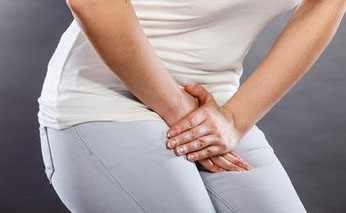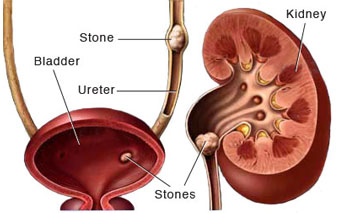What is Peyronie’s disease
Peyronie’s disease also called the plastic induration of the penis or the chronic inflammation of the albumin, represents the growth of fibrous plaques in the soft tissue of the penis, respectively in the albuminous tunic, which surrounds as an elastic sheath each of the two cavernous bodies of the penis, located on the lateral parts. and causes an abnormal curvature to occur.
A certain degree of curvature of the penis can be normal and innate, without causing complications, but Peyronie’s disease is a chronic inflammation that can cause pain, hardening, large size lesions and erectile dysfunction with painful erections, painful sexual intercourse, lack of rigidity, distal penis, toward the tip of the fibrous area and abnormal curvature that increases during erection.
Erectile dysfunction can have many causes, Peyronie’s disease being a rare cause, affecting about 4% of men.
Concern about the curvature of the penis can cause stress and anxiety, which also contribute to worsening erectile dysfunction. However, quite a number of men affected by this disorder have a satisfying sex life, says sexologist in Noida.
Signs and Symptoms
The signs and symptoms of Peyronie’s disease may appear suddenly or may develop gradually. The main sign is the curvature of the penis – the penis is curved laterally, up or down, depending on where the fibrous plaques are located.
Other signs and symptoms include the hard plates that feel under the skin of the penis and contain scar tissue in the form of strips or clumps, usually in the upper part of the penis; by accumulating calcium these plaques can become very hard and lead to severe curvature, painful erections or weak erections because the hardened tissue reduces elasticity in that area and makes intercourse difficult. Sometimes, during erection, the penis may shorten or narrow at a certain point. Rarely, the penis can acquire a form of an hourglass.
Curvature and shortening of the penis associated with Peyronie’s disease may worsen over time, but usually, stabilize after 3-12 months after onset. The pain during the erection decreases after 1-2 years.
The disorder occurs rarely in young adults, being more frequent between 40 and 70 years, says sexologist in Ghaziabad.
Causes And Risk Factors
The causes of Peyronie’s disease are not at all known. It can be caused by minor, repeated, penile injuries, either during sexual intercourse or as a result of sports activity or other accidents. After scar tissue is formed, over time, the plaques characteristic of this disease develops.
Genetic factors may be involved because there is an increased risk for men who have relatives suffering from Peyronie’s disease. Also, increased risk exists for those who have connective tissue disorders, such as tympanosclerosis or Dupuytren contracture, which is a thickening and contraction of the tissues of the hand, through which the fingers are drawn inwards.
It appears especially in older men with weak erections and frequent sexual intercourse. It is also associated with diabetes, high blood pressure, hyperlipidemia, surgical treatment of the prostate and occurs more frequently in smokers. Occasionally, it is associated with fibromatous degeneration of the outer cartilage.
The disease has two phases – acute and chronic. In the acute phase, which lasts 6-18 months, there is penile pain, curvature, and nodules, and in the chronic phase the fibrous plates do not increase and the curvature of the penis does not worsen anymore, and the pain during the erection disappears.
The diagnosis can be made by the urologist in Noida by palpation and discussion with the patient. Simple ultrasound and duplex Doppler scanning can also be used.
In this way, a possible arterial insufficiency or veno-occlusive dysfunction can be observed, which can result from the fibrous plaque influencing the blood circulation and which are also causes of erectile dysfunction. Radiographically, cleavages can be observed, these being an indication for surgery
Treatment of Peyronie’s Disease
In mild cases, when there is no pain or the pain is mild, when the curvature does not accentuate and the sex life is satisfactory, the urologist in Ghaziabad will recommend the evolution of the disease.
In more severe cases treatment is prescribed. Injections can be made with collagen products (collagenase) if the curvature of the penis forms an angle greater than 30 degrees. It is also prescribed injections with interferon or oral verapamil.
Some techniques are still in the experimental phase. Thus, some patients may benefit from iontophoresis, a technique by which a weak electrical current passes through the skin, favoring the absorption of drugs in the affected area. Another option is extracorporeal shock wave therapy. Radiation therapy was also experienced.
The administration of vitamin E has doubtful effects. The administration of the vitamin B complex also does not guarantee positive effects. As well as some anti-estrogenic, antioxidant or anti-inflammatory drugs.
Sometimes easy exercises for stretching the penis manually or with special devices – stretching the penis when it is not erect, for 30 seconds, three times a day, for 6 weeks after treatment with collagen products and straightening it for 30 seconds once a day, during spontaneous erection.
Surgical treatment is generally prescribed by sexologist in Delhi in cases of severe deformity and only in the chronic phase of the disease, after the degree of curvature and the size of the plates have stabilized for at least 3-6 months.
Surgical techniques include elongation of the lateral penis by incision, excision of the plates and skin graft, when the curvature is over 60 degrees, shortening of the lateral penis when the disease is less serious and the penis rather long, penile prosthesis or implant (flexible or inflatable cylinders inserted into the cavernous bodies).
The implant can be permanent, giving the penis a semi-rigid character, sufficient for sexual intercourse, or activated by a pump located in the scrotum, which produces a stronger erection.
Patients suffering from Peyronie’s Disease are better off changing their lifestyle – quitting smoking, doing gymnastics, reducing alcohol use and not taking drugs. The urologist in Delhi should be consulted when pain occurs, with or without an erection, and when priapism occurs – unwanted and persistent erection for more than 30 minutes, sometimes accompanied by pain.





